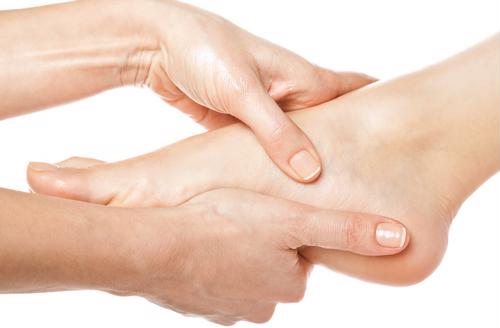
Plantar fasciitis can be a painful condition.
If you are experiencing a sharp pain in your heel that is worse first thing in the morning or after you have been sitting for awhile, there may be a simple explanation: plantar fasciitis. This common condition, which can be developed a number of ways, is uncomfortable, but it is treatable.
The following is a quick guide to the condition, including steps you can take to relieve the pain.
What is plantar fasciitis?
Plantar fasciitis is an inflammation of the band of tissue that connects your toes to your heel bone. According to Mayo Clinic, the condition is one of the most common causes of heel pain.
The American Academy of Orthopaedic Surgeons reported that common symptoms of plantar fasciitis include:
- Pain when walking after periods of inactivity – such as sleeping or riding in a car – that lessens after several minutes of walking.
- Increased pain that occurs following periods of activity or exercise.
- Pain that is located near the heel on the bottom of the foot.

What causes plantar fasciitis?
Although plantar fasciitis is a common running injury, there are a variety of factors that can cause the condition. According to Mayo Clinic, these risk factors include:
- High-stress exercises: Athletic activities that put stress on the heels are a common cause of plantar fasciitis. In addition to running, other examples of exercises that can encourage development of the condition include aerobic dance and anything that involves ballistic jumping.
- Obesity: Extra weight puts additional strain on the plantar fascia. People who are overweight tend to develop plantar fasciitis more frequently.
- Foot structure: Sometimes unlucky genetics play a role in developing plantar fascia. Having a high arch or being flat-footed can be contributing factors.
- Certain occupations: Jobs that require long periods of standing or walking – such as working as a teacher or cashier – can be a contributing factor.
- Age: Plantar fasciitis is most common in people between the ages of 40 and 60.
Wearing shoes that do not provide adequate support can also trigger the condition.
How can the condition be treated?
The first step is to make an appointment with a physician who can diagnose the condition. An imaging test is usually not required, though an X-Ray or MRI may be recommended, according to Mayo Clinic.
Once you have received a diagnosis, your next concern is likely how to eliminate the problem. Plantar fasciitis can usually be resolved within a few months with appropriate treatment and rarely requires surgery or any intense therapy. More often, stretching, arch support and perhaps anti-inflammatory medication are enough. Your physician will be able to recommend a precise course of action for your particular case.
If you are dealing with pain caused by plantar fasciitis, the following could provide some relief:
1. Regular stretching
One of the most common ways to treat plantar fasciitis – and any accompanying pain – is through stretching. The American Orthopaedic Foot & Ankle Society recommended standing parallel to a wall with one leg straight and one leg bent with the foot in front of you. Lean toward the wall, keeping both heels on the ground, stretching the straightened leg. After 10 seconds, straighten and switch legs. Repeat the process 20 times for each heel that is in pain.
2. This simple exercise
A 2014 study published in the Scandinavian Journal of Medicine & Science in Sports suggested an interesting new exercise for relieving the pain caused by plantar fasciitis. Participants in the study stood barefoot on the edge of a stair or box with the painful heel extended over the edge of the stair and the toes of the same foot resting on a wrapped up towel. With the unaffected leg hanging loosely, participants would slowly raise the painful heel over the course of three seconds, hold for two seconds at the top, take three seconds to lower it again and repeat the process 12 times. Once the repetitions became too easy, they would wear a backpack with books to add extra weight. The repetitions were repeated eight to 12 times every other day and the researchers found that vast improvements were reported after three months.
3. Nice Stretch night splints
Sometimes physicians or physical therapists recommend wearing night splints to hold the plantar fascia – and Achilles tendon – in a conducive position while you sleep. The Nice Stretch® line of night splints from Brown Medical Industries makes compliance with this recommendation easy. Lightweight and comfortable, the original splint includes a toe lift for additional stretch and toe extension. There is even room to insert a Polar Ice® insert to reduce inflammation through cold therapy. Other models, like the 90 or Dorsal, give you plenty of options to ensure that you find the splint that is right for you.
